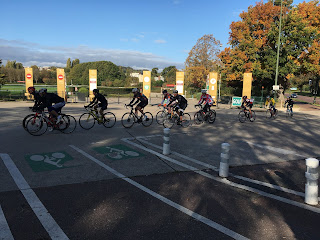A Sherman tank in front of the Bastogne War Museum
painted by a street artist to honor victims of violence.
In front of the museum in Bastogne is a temporary display of art from the fall of the Berlin Wall--30 pieces of wall painted to commemorate freedom. An M4 Sherman tank in front of the museum was also repainted to remember the victims of war and violence around the world. The other tanks on display in the museum are, of course, painted as they were during their wartime service.
Seeing a Sherman repainted by a street artist in front of a war museum was jarring. Should a war machine be repainted as an anti-war protest?
Soviet tanks repainted in rainbow and pink as
anti-war protests.
I realized I did not mind seeing former Soviet tanks painted pink or with love symbols. The Soviet Army was my Cold War enemy. They lost. So defacing their tanks was okay.
But seeing the Sherman tank painted in protest made me uncomfortable. That was an American tank.
Then I remembered the mixed feelings I had just a week ago when I saw American-built M60 tanks, the tanks I served on in the Cold War, rolling into Syria. More than 2,000 of the 3,000 tanks fielded by the Turkish Army are M60s. The tank I served on was part of the attack against the allies Trump abandoned. I did not like seeing what could have been my old tank rolling across the desert in service to a dictator.
And then I thought of why tanks are painted in protest and as monuments and memorials. Tanks are used as targets or monuments or left to rust because they can't be recycled. Armor plate costs more to metal than the recovered metal is worth. So tanks can't be melted down to make Mack trucks or Mercedes road cars.
Tanks are war machines. It would be best if unneeded war machines could be reused peacefully, but since they can't they will be monuments or palettes for protest for centuries to come. Armor plate a foot or more thick won't rust away anytime soon.















